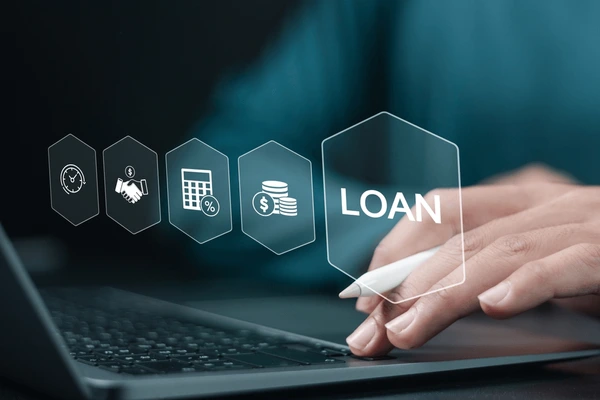
Does a Student Loan Affect Your Credit Rating in Florida?
November 2, 2025
How a Self-Employed Person Can Get a Home Loan (U.S. Guide)
November 2, 2025The SAVE plan was created in 2023 as the most affordable student loan repayment option, but it’s currently blocked by the courts, and Congress decided to eliminate the plan by July 2028. This article covers what student loan borrowers need to know now about the SAVE plan.
Can I still sign up for the SAVE plan?
No. Due to court cases challenging the SAVE plan, the Department of Education stopped allowing borrowers to sign up for the SAVE plan in the Spring of 2025.
What if I’m already on the SAVE Plan?
Borrowers already enrolled in the SAVE plan were automatically placed in forbearance while the court cases are being resolved, meaning these borrowers are not required to make payments right now. Read on for more about the SAVE forbearance.
Additionally, as a result of the Big Bill that was signed into law on July 4, 2025, the SAVE plan, along with a few other IDR plans, will be eliminated for all borrowers by July 1, 2028. Borrowers will not be able to remain in the SAVE plan after that date, and it is possible the plan will be eliminated sooner. Any borrowers still enrolled in SAVE on July 1, 2028 will be automatically switched to a different plan then.
For the most up-to-date information, borrowers should visit the Department of Education’s website.
What You Need to Know if You are Currently on the SAVE Plan:
What is the SAVE forbearance?
Borrowers enrolled in the SAVE plan have been placed in a forbearance—meaning borrowers in SAVE are not currently required to make payments. But the Department has started charging interest on these loans again, since August 1, 2025, so borrowers in the SAVE forbearance will see their student loan balances increase the longer they stay in the SAVE forbearance.
Additionally, the months spent in the SAVE forbearance do not count towards IDR or Public Service Loan Forgiveness (PSLF), meaning borrowers are missing out on making progress toward becoming debt-free in those programs.
I’ve met the number of payments for IDR cancellation. Can I still have my loans canceled while I’m in the SAVE forbearance?
No. As a result of court orders, the Department has stopped providing IDR cancellation to borrowers enrolled in the SAVE plan, even if they have met the required number of qualifying payments. Borrowers in SAVE who have 25 years of qualifying payments (300 months) should consider requesting to switch to the IBR or ICR plans, as they will be eligible to have their loans cancelled in IBR or ICR now. This is particularly important for borrowers who reach 300 months before the end of 2025 because loans cancelled through 2025 will be protected from federal tax consequences. Loans cancelled through IDR after 2025 may be treated as “income” and subject to income taxes.
Note: In October 2025, a court ordered that the Department treat any borrower enrolled in SAVE who reaches 300 months of qualifying IDR payments before the end of 2025 AND who applies to switch to IBR or ICR before the end of 2025 as having qualified for loan cancellation in 2025. This should protect the borrower from having to pay federal taxes on their cancelled debt. If the borrower waits until after 2025 is over, any debt they have cancelled through IDR may be treated as taxable income. Therefore, borrowers in SAVE who have 300 months (25 years) of qualifying IDR payments should strongly consider applying to switch to IBR or ICR before December 31, 2025.
Should I switch out of the SAVE plan now or wait until it’s eliminated?
It depends on your goals. If you want to get your loans cancelled through Public Service Loan Forgiveness (PSLF) or IDR, it’s important to know that time spent in the SAVE forbearance does not count as qualifying time toward the 10 years in repayment required for PSLF or toward the 20 to 30 years in repayment required for IDR cancellation. Additionally, borrowers cannot make qualifying payments toward IDR or PSLF cancellation while they are in the SAVE plan.
Instead, borrowers who want to continue making progress in IDR or PSLF should consider switching to a different IDR plan, such as IBR, where they can continue earning credit toward IDR or PSLF cancellation. While some borrowers will face higher payments in IBR, PAYE, or ICR, some borrowers who are eligible for $0 payments in SAVE will also be eligible for $0 payments in IBR, PAYE, or ICR. It is worth using the Loan Simulator to check if you are eligible for a $0 payment in other plans and, if not, whether the payments in another plan are affordable to you.
If you can’t afford payments in another plan right now, or need to focus your money on another financial goal (e.g., paying off a higher interest debt), then it might be fine to leave your loan in the SAVE forbearance for now. Just realize that your balance will go up with interest, you won’t be making progress toward being student-debt free, and at some point, the SAVE forbearance will end (and the SAVE plan will be fully eliminated), and the Department will start billing you again.
What about the PSLF “buyback” process?
There is another option for borrowers in the SAVE forbearance who want to continue earning credit towards PSLF. Some borrowers have been able to get credit toward PSLF forgiveness for time in the SAVE forbearance through the PSLF “buyback” process. The PSLF rules allow borrowers to “buy back” past months that did not count towards PSLF by paying the amounts that they would have needed to pay under an IDR plan during those months. But right now, the buyback process is only available to borrowers who already have 10 years of qualifying employment and will be eligible for cancellation through PSLF now if their past months in forbearance are counted. Borrowers earlier on in their PLSF journey cannot yet use the buyback process.
Also, while some borrowers have reported that the Department allowed them to “buy back” months in the SAVE forbearance by making a lump sum payment for those months based on the same monthly rate that they were paying in SAVE before the forbearance started, the Department may not continue to calculate buyback payments that way. The Department has said this way of calculating buyback rates only applies if the forbearance was less than a year. But the SAVE forbearance has now been going on for over a year. It is therefore unclear how the Department will calculate how much borrowers will owe under the buyback process for months the borrower was in the SAVE forbearance going forward.
For more background about the history of the SAVE plan and the lawsuits surrounding it, see our previous blog posts on this issue.




